
Quaternary
Scope & Guideline
Advancing Knowledge in Quaternary Science
Introduction
Aims and Scopes
- Paleoecology and Paleoclimatology:
Research in this area seeks to reconstruct past environments and climates, utilizing proxies such as pollen, sediment cores, and isotopic analyses to understand ecological dynamics over time. - Geochronology and Chronostratigraphy:
This scope emphasizes the dating of geological and archaeological events through various techniques, including radiocarbon dating, luminescence dating, and magnetostratigraphy to establish chronological frameworks. - Archaeological and Anthropological Insights:
The journal publishes studies that explore human interactions with their environments during the Quaternary, focusing on subsistence strategies, cultural developments, and the impact of climate change on human populations. - Paleoenvironmental Reconstruction:
Research on reconstructing past landscapes and ecosystems, often through sedimentological and geochemical analyses, to provide insights into the conditions that shaped current environments. - Faunal and Floral Studies:
This area includes studies on the evolution, extinction, and biogeography of species during the Quaternary, providing a clearer picture of biodiversity changes related to climatic shifts.
Trending and Emerging
- Climate Change Impacts:
An increasing number of studies are dedicated to understanding the effects of climate change on both historical ecosystems and current biodiversity, highlighting the relevance of past data in predicting future ecological outcomes. - Integration of Multidisciplinary Methods:
The trend towards employing integrated methodologies, such as combining geomorphology, archaeology, and paleoecology, is evident, showcasing a holistic view of environmental changes over time. - Use of Advanced Analytical Techniques:
Emerging themes include the use of advanced technologies such as hyperspectral imaging and sedimentary ancient DNA analysis, which are becoming crucial for reconstructing past environments and understanding ecological dynamics. - Anthropocene Studies:
There is a growing interest in exploring the Anthropocene epoch's implications, particularly how past human activities and climatic events inform current environmental challenges. - Paleoenvironmental Modeling:
The application of modeling techniques to simulate past environmental conditions based on geological and biological data is gaining traction, providing insights into how ecosystems respond to climatic changes.
Declining or Waning
- Traditional Stratigraphy:
Research that relies solely on traditional stratigraphic methods appears to be waning, as more integrated and multidisciplinary approaches are favored, combining stratigraphy with geochemical and chronological data. - Narrow Regional Studies:
There is a noticeable decrease in studies focused on very localized regions without broader implications, as the journal increasingly emphasizes research that connects findings to global climatic or ecological patterns. - Descriptive Paleontology:
While descriptive accounts of fossil finds were once prevalent, the trend is moving towards more analytical studies that incorporate ecological and evolutionary implications rather than mere taxonomic descriptions.
Similar Journals
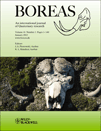
BOREAS
Pioneering Research in Archaeology and EcologyBOREAS is a prestigious academic journal published by WILEY, dedicated to advancing knowledge across the fields of Archaeology, Ecology, Evolution, Behavior, Systematics, and Geology. With a commendable track record since its inception in 1972, BOREAS has consistently contributed to the scholarly landscape, currently holding a distinguished position in Q1 across multiple categories, including a ranking of #8 in Archaeology and a solid percentile rank in Ecology and Geology. This high-impact journal fosters the dissemination of groundbreaking research, further establishing itself as a vital resource for researchers, professionals, and students alike. While access options are limited to subscription-based, the quality and significance of research published in BOREAS make it an essential addition to any academic library, ensuring that studies conducted in these pivotal fields reach a global audience. With a commitment to excellence and innovation, BOREAS continues to drive forward the frontiers of knowledge and understanding in Earth and planetary sciences.

RADIOCARBON
Innovative Research, Lasting Impact: The Heart of Radiocarbon ScienceRADIOCARBON, published by Cambridge University Press, is a premier academic journal that has been pivotal in advancing the fields of Archeology and Earth and Planetary Sciences. With an impressive impact factor placing it in the Q1 category of both disciplines, it ranks 1st out of 413 in Archeology and 6th out of 195 in General Earth and Planetary Sciences. As a trusted source for significant research findings, the journal spans the years from 1980 to 2024, offering a robust archive of scholarly articles. Although it does not currently provide Open Access options, it remains a vital resource for researchers, professionals, and students eager to explore innovative studies and applications in radiocarbon dating and its implications within the broader scientific landscape. The journal’s headquarters in Cambridge, England, solidifies its reputation as a key player in the academic community, fostering rigorous scientific discussions and discoveries.
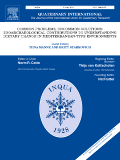
QUATERNARY INTERNATIONAL
Connecting Disciplines Through Quaternary Research.Quaternary International is a prestigious journal published by Pergamon-Elsevier Science Ltd, focusing on the interdisciplinary study of the Quaternary Period, which encompasses significant geological, hydrological, and climatic changes. With an ISSN of 1040-6182 and E-ISSN 1873-4553, it stands as a critical resource in the realm of Earth-Surface Processes, achieving a strong position within the academic community, evidenced by its 2023 Scopus rank of #32 out of 179 in this category, corresponding to an impressive 82nd percentile. Since its inception in 1989, this journal has provided valuable insights and contributed to the advancement of knowledge in the Earth and Planetary Sciences. Researchers, professionals, and students alike will find a wealth of original research articles, reviews, and case studies that inform and inspire further studies in the Quaternary sciences. Although the journal does not currently offer open access options, its reputation for rigorous peer review and impactful content underscores its significance in shaping scholarly discourse in the field.
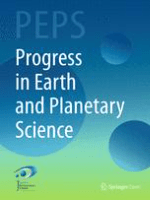
Progress in Earth and Planetary Science
Catalyzing global discourse in Earth and planetary studies.Progress in Earth and Planetary Science is a premier open-access journal published by Springer, dedicated to advancing the field of Earth and planetary sciences. Since its inception in 2014, this journal has emerged as a prominent platform, achieving a Q1 ranking in the Earth and Planetary Sciences category, reflecting its high impact and rigorous peer-review process that ensures the highest quality of published research. With its broad scope encompassing diverse subfields within the Earth sciences, the journal aims to foster interdisciplinary collaboration and innovation among researchers, professionals, and students. The journal's commitment to accessibility through its open access model promotes the dissemination of knowledge globally, allowing critical research findings to be shared widely within the scientific community. Located in the United Kingdom, Progress in Earth and Planetary Science continues to play an essential role in shaping the future of Earth and planetary research from 2014 to 2024 and beyond.

Rossiiskaya Arkheologiya
Transforming Research into UnderstandingRossiiskaya Arkheologiya, published by IZDATELSTVO NAUKA, stands as a leading academic journal in the field of archaeology and history, renowned for its commitment to advancing scholarly discourse and research in these vital humanities disciplines. With an impressive Impact Factor and a distinguished position as a Q1 journal in both archaeology and history for 2023, it ranks among the top tier of academic publications, reinforcing its reputation within the scientific community. The journal features a diverse array of studies focusing on archaeological methodologies, historical analyses, and cultural heritage, fostering collaboration and knowledge exchange among researchers, professionals, and students alike. While access to its rich repository of insights is through a traditional subscription model, the journal’s contribution to the archaeological narrative not only elevates current research practices but also propels future inquiries within the Russian Federation and beyond. Addressing critical questions and dialogues within its scope from 2017 to 2023, Rossiiskaya Arkheologiya serves as an essential resource for anyone dedicated to exploring the complexities of human history through material culture.
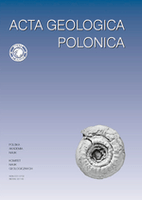
ACTA GEOLOGICA POLONICA
Innovative research shaping the landscape of geology.ACTA GEOLOGICA POLONICA is a distinguished journal published by the Polska Akademia Nauk, in collaboration with the University of Warsaw's Geology Department. Since its inception, it has served as a vital platform for disseminating innovative research in the field of Geology, reflecting a commitment to advancing scientific knowledge in Earth and planetary sciences. With an ISSN of 0001-5709 and an E-ISSN of 2300-1887, this journal provides a rigorous review process and is classified in the Q3 quartile for Geology as of 2023, indicating its growing influence in the discipline. Despite not being open access, the journal facilitates meaningful contributions that span a range of geological topics from fundamental research to applied sciences, thereby enriching the academic landscape. Researchers, professionals, and students alike are encouraged to engage with the valuable findings and discussions contained within its pages, which continue to shape the future of geological inquiry.

QUATERNAIRE
Fostering Collaboration in Earth Sciences and Environmental Research.QUATERNAIRE is a reputable journal managed by the Société Géologique de France, specializing in the realms of Earth-Surface Processes and Geology. This esteemed publication has been a vital platform for scientific discourse since its inception, presenting compelling research and insights from both fields. With a significant impact in the academic community, it currently holds a Q3 quartile ranking in the 2023 Scopus categories, demonstrating its importance in disseminating knowledge related to geological phenomena. Although QUATERNAIRE does not have an open access model, it ensures that critical research is accessible to a wide audience, enhancing collaboration among geoscientists and environmental researchers. Based in France at 77, Rue Claude-Bernard, Paris F-75005, this journal continues to evolve its publication scope, welcoming contributions that delve into the intricacies of Earth's processes from 1990 to 2024. Researchers, professionals, and students alike will find valuable resources and inspiration within its pages, contributing to a deeper understanding of our planet's past and present.

TRIA-Territorio della Ricerca su Insediamenti e Ambiente
Bridging Theory and Practice in Territorial StudiesTRIA-Territorio della Ricerca su Insediamenti e Ambiente, published by EDIZIONI SCIENTIFICHE ITALIANE SPA, is a distinguished open-access journal dedicated to the interdisciplinary exploration of territorial research pertaining to settlements and the environment. Since its establishment, the journal has been at the forefront of facilitating dialogue and disseminating innovative research that informs sustainable development and urban planning practices. With an ISSN of 1974-6849 and an E-ISSN of 2281-4574, TRIA contributes significantly to the academic community by providing a platform for researchers, professionals, and scholars to share their findings globally. Located in the vibrant city of Naples, Italy, this journal aims to bridge the gap between theoretical frameworks and practical applications in the dynamics of territorial studies. The open-access model, adopted since 2012, ensures that valuable research reaches a broader audience, elevating the conversation around environmental sustainability and settlement patterns. As a key resource in its field, TRIA is poised to foster collaboration and inspire advancements in research methodologies, helping to solve contemporary challenges in urban and environmental studies.
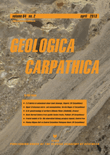
GEOLOGICA CARPATHICA
Unlocking the Secrets of the Carpathian RegionGEOLOGICA CARPATHICA, with ISSN 1335-0552 and E-ISSN 1336-8052, is a distinguished open access journal published by the Slovak Academy of Sciences Geological Institute, serving as a pivotal platform for the dissemination of research in the field of Geology. Established in 1991 and continuing through 2024, the journal is recognized for its significant contributions to Earth and Planetary Sciences, evidenced by its 2023 Scopus ranking placing it in the second quartile (Q2) within Geology. With an H-index that showcases its impactful publications, GEOLOGICA CARPATHICA is committed to fostering scholarly communication while promoting accessible research, having adopted an open access model since 2009. Located in beautiful Bratislava, Slovakia, this journal aims to engage a global audience of researchers, professionals, and students interested in ecological, geological, and environmental studies, making it a prominent resource for enriching the scientific community's understanding of the Carpathian region and beyond.
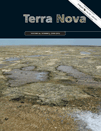
TERRA NOVA
Uncovering the Secrets of Our PlanetTERRA NOVA, published by WILEY, is a leading journal in the field of Geology, with a remarkable impact within the academic community. With the ISSN 0954-4879 and E-ISSN 1365-3121, the journal has been a pivotal platform for innovative research since its inception in 1989 and will continue its influence through to 2024. Ranked in the top tier (Q1) of its category for 2023, TERRA NOVA holds an esteemed position with a Scopus ranking of 67 out of 321 in Earth and Planetary Sciences, showcasing its dedication to high-quality, impactful scientific discourse. The journal covers a diverse range of topics within geology, providing valuable insights for environmental scientists, geologists, and industry professionals. By fostering an interdisciplinary approach, TERRA NOVA remains committed to advancing the understanding of geological processes and their implications for society. With a dedicated readership of researchers, professionals, and students, this journal is essential for those looking to stay abreast of the latest developments and trends in the field.